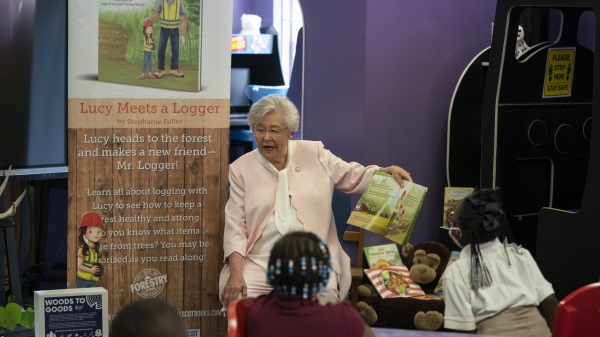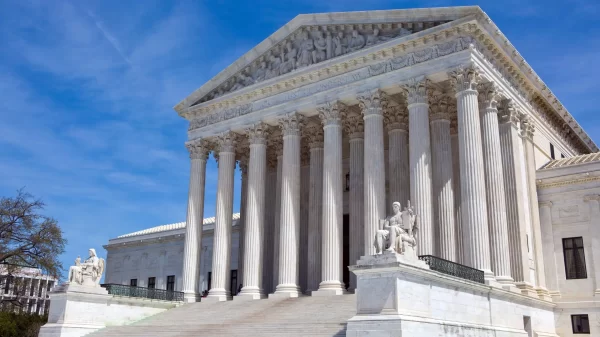By Brandon Moseley
Alabama Political Reporter
Secretary of the Interior Ken Salazar announced that the Poarch Band of Creek Indians had been awarded $200,000 for river cane reintroduction and longleaf pine restoration.
On Friday, Secretary of the Interior Ken Salazar announced awards of more than $4.2 Million in Conservation Grants to Native American Tribes. Sec. Salazar said that grants were going to 23 Native American Tribes in 17 states funding a wide range of conservation projects ranging from salmon restoration to invasive species control.
Sec. Salazar said, “Native American tribes have a deep and abiding knowledge of the land and its wildlife handed down from generation to generation.” “Through these grants, we are building on our long-standing partnership with tribal nations to manage our wildlife and its habitat more effectively across the country.”
Since 2003 the U.S. Fish and Wildlife Service has awarded more than $54 million to Native American Tribes through the Tribal Wildlife Grants Program. The grants to Federally-recognized tribes “provide technical and financial assistance for the development and implementation of projects that benefit fish and wildlife resources and their habitat, including non-game species.”
Fish and Wildlife Service Agent Dan Ashe said, “Native American Tribes manage more than 100 million acres of vital fish and wildlife habitat across the nation and have a long heritage as stewards of the land and its wildlife.”
The grand money to the Poarch Creek Band of Indians is to restore longleaf pine to Indian lands and reintroduce river cane.
Prior to commercial logging much of Alabama was covered with longleaf pine. The pine that older southern homes were made from was the longer lived (150+ years) longleaf pine. Early settlers of the state grazed cattle and hogs on the grass that grew between the massive trees. As that was logged out, it was replaced by loblolly pine which grows much faster in its first ten years, volunteers easily, and is easier to establish. Longleaf pine is much more tolerant of pine beetles and fire than is loblolly pine and is preferred for growing utility poles.
River cane is a type of bamboo that is native to the United States and is useful as wildlife habitat as well as erosion control protecting both water quality and topsoil by stabilizing creek and river banks. It also provides material for Native American artisans. Historically Indians made baskets, mats, tools, and up to 2000 different items from the native river cane that used to be more abundant before Chinese bamboo and privet were introduced into southern river systems. Some traditional artisans still make the double woven baskets for collectors.
The ancestors of the Poarch Creeks lived on the Alabama River between Wetumpka and Tensaw. Most Indians in Alabama were removed by force in the years following the Creek Indian Uprising of 1813-1814 in support of the British in the War of 1812. Several families of Creeks, including the Manacs, Hollingers, Sizemores, Stiggins, Baileys, Colberts, Weatherfords, McGhees, Semoices, and Marlows who had provided services to the government were allowed to keep their lands or were allowed to obtain land grants by an 1836 Act of Congress. Since most of the best grant land was gone, those who obtained the new 1836 land grants moved to near present day Poarch where grant land was available. The families tended to intermarry gradually becoming a distinct band of Creeks. The Indians had their own Indian Schools, Churches, and cemetery through segregation. In 1920 the federal government intervened on behalf of the Indians stopping Escambia County from illegally taxing their land trust. In 1949 Escambia County built a consolidated Indian School allowing the Indians to go to school through the sixth grade. Later the Indians were allowed to go by bus to Junior High School and High School. In 1970 segregated schooling ended.
In 1950 Calvin McGhee became the first formally recognized head of the Creek Nation of Indians East of the Mississippi. In the 1970s the Poarch band of Creek Indians formed their own Poarch only Council. On August 11, 1984 the Poarch Band of Creeks petitioned the federal government for formal recognition. They are the only federally recognized Indian tribe in Alabama. 230 acres were declared a reservation.
There are 2,340 members of the Poarch Band of Creek Indian and over 1,000 of them live near Poarch, Alabama in Escambia County. They operate, ”As a sovereign nation with its own system of government and bylaws. The Tribe operates a variety of economic enterprises, which employ hundreds of area residents. Poarch Creek Indian Gaming manages three gaming facilities in Alabama, including: the Creek Entertainment Center in Atmore; Riverside Entertainment Center in Wetumpka; and, Tallapoosa Entertainment Center in Montgomery. “
For more information on the Fish and Wildlife Service Tribal Wildlife Grant Program:
http://www.fws.gov/nativeamerican/grants.html.
For more information on Alabama’s only federal recognized Indian Tribe:



















































